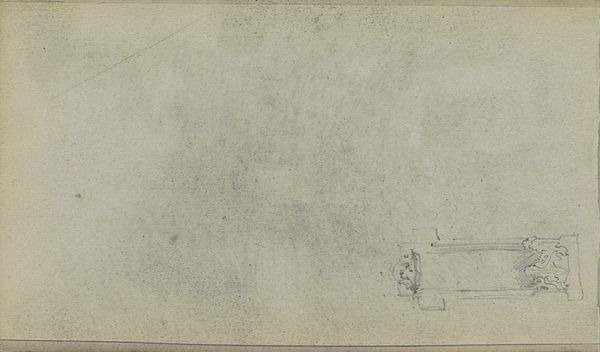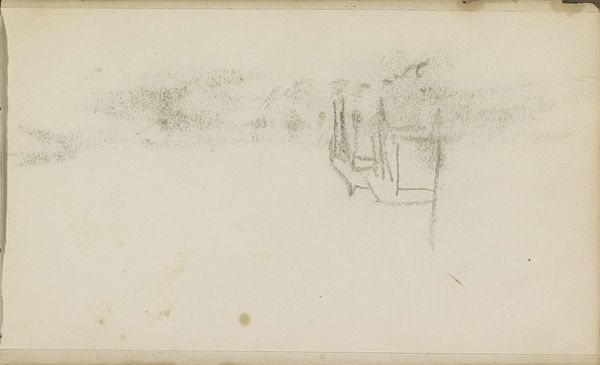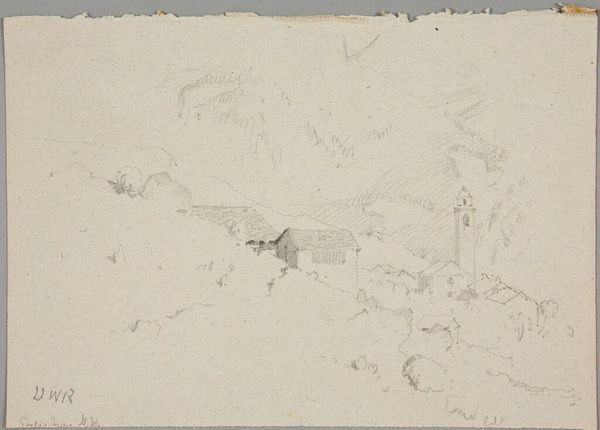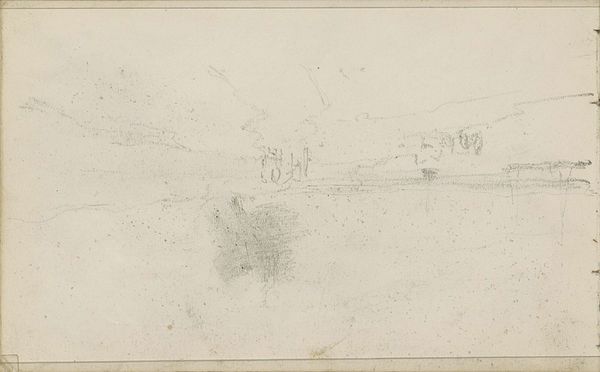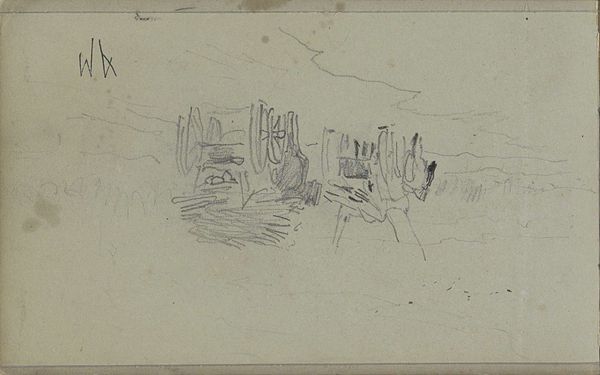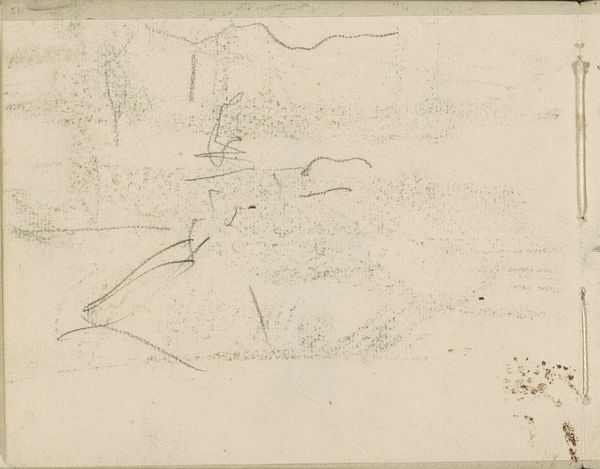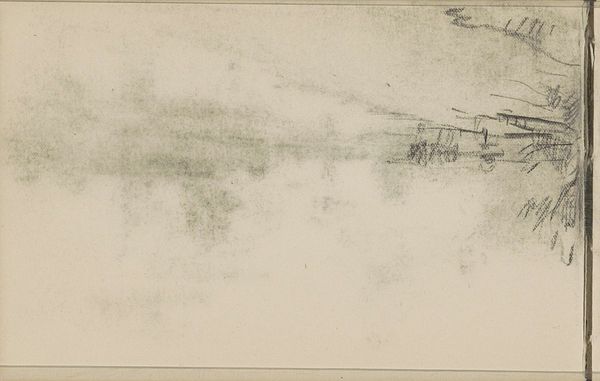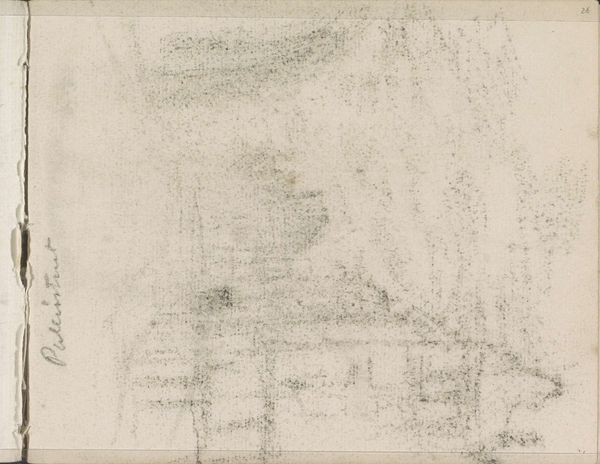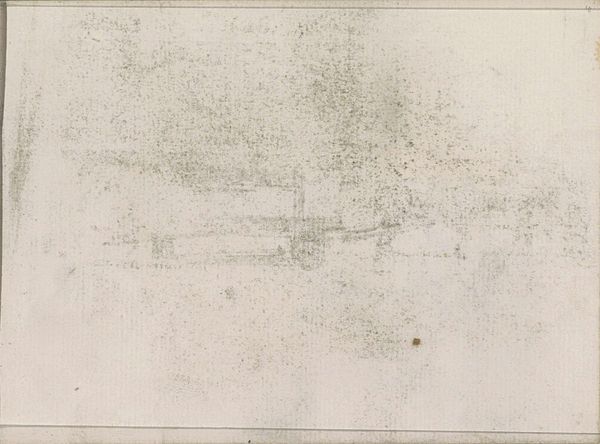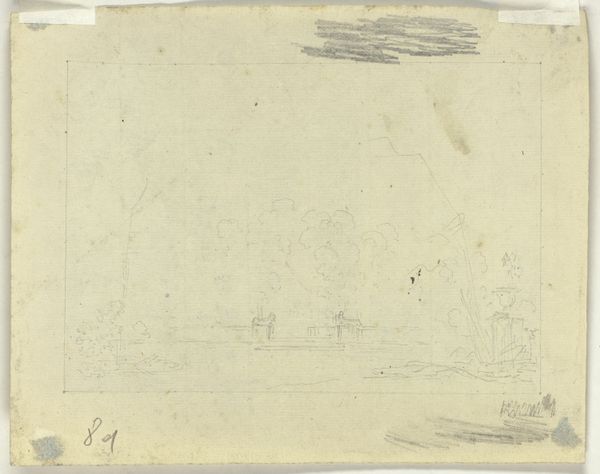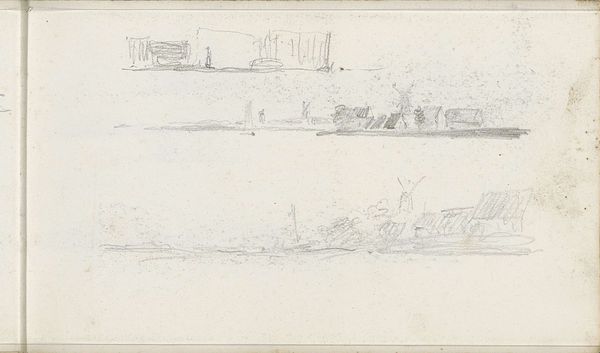
drawing, paper, watercolor
#
drawing
#
landscape
#
paper
#
watercolor
#
watercolor
Copyright: Rijks Museum: Open Domain
Curator: Welcome. Here we have a work by Johan Antonie de Jonge, titled "Gebouw, mogelijk de Ridderzaal te Den Haag," which translates to "Building, possibly the Ridderzaal in The Hague." Created sometime between 1901 and 1927, this piece utilizes watercolor and drawing on paper. Editor: My first thought is ethereal and dreamy. The haziness gives it the feeling of a half-remembered place. Or perhaps an architect's first thought, the bones of a future building gently emerging on the page. Curator: I find it interesting how the Ridderzaal, a structure of great historical and political significance in the Netherlands, is rendered here with such... fragility. The looseness contrasts with the Hall's importance in shaping Dutch national identity and political discourse. Editor: It's almost as if de Jonge is subverting the monumentality of the building itself. Or rather, perhaps he's showing the inherent vulnerability of anything touched by history. Even stone fades, paint peels. Ideas evolve, and national identities with them. The sketchy lines also remind me that at some point, a real tangible blueprint must exist to construct anything in the physical world. Curator: Indeed. And this "looseness", this incomplete quality, allows the viewer to engage more directly. We’re invited to fill in the blanks, to project our own understanding of Dutch history and political space onto the image. The use of watercolor contributes to this effect, doesn’t it? It's a medium that is very much tied to its environment, affected by humidity, by the paper itself. Editor: Absolutely. Watercolor bleeds its intentions; I suppose the best art does too. Perhaps the artist used the properties of watercolor to illustrate the impermanence of even the most formidable building in a location with the densest social texture. There are also some darker shades that evoke the North Sea climate! It's evocative, wouldn’t you say? Curator: It's a powerful and quiet piece. A subtle reminder of the shifting sands of history and identity, represented through the lens of architecture. Editor: For me, it's the intimate scale combined with a profound idea that resonates. It inspires us to re-examine not just buildings but the layers of history and stories they carry, the whisper in the stone.
Comments
No comments
Be the first to comment and join the conversation on the ultimate creative platform.
